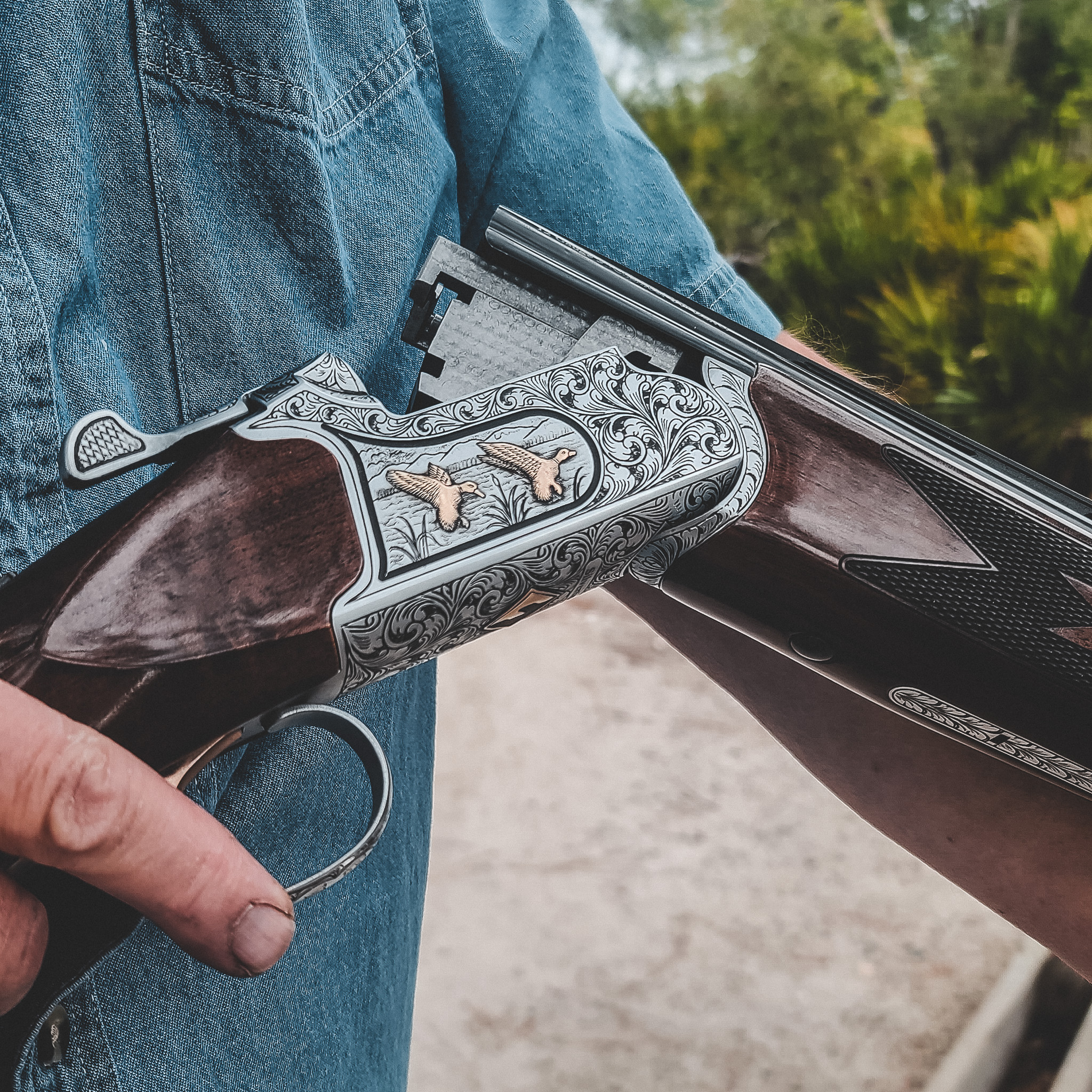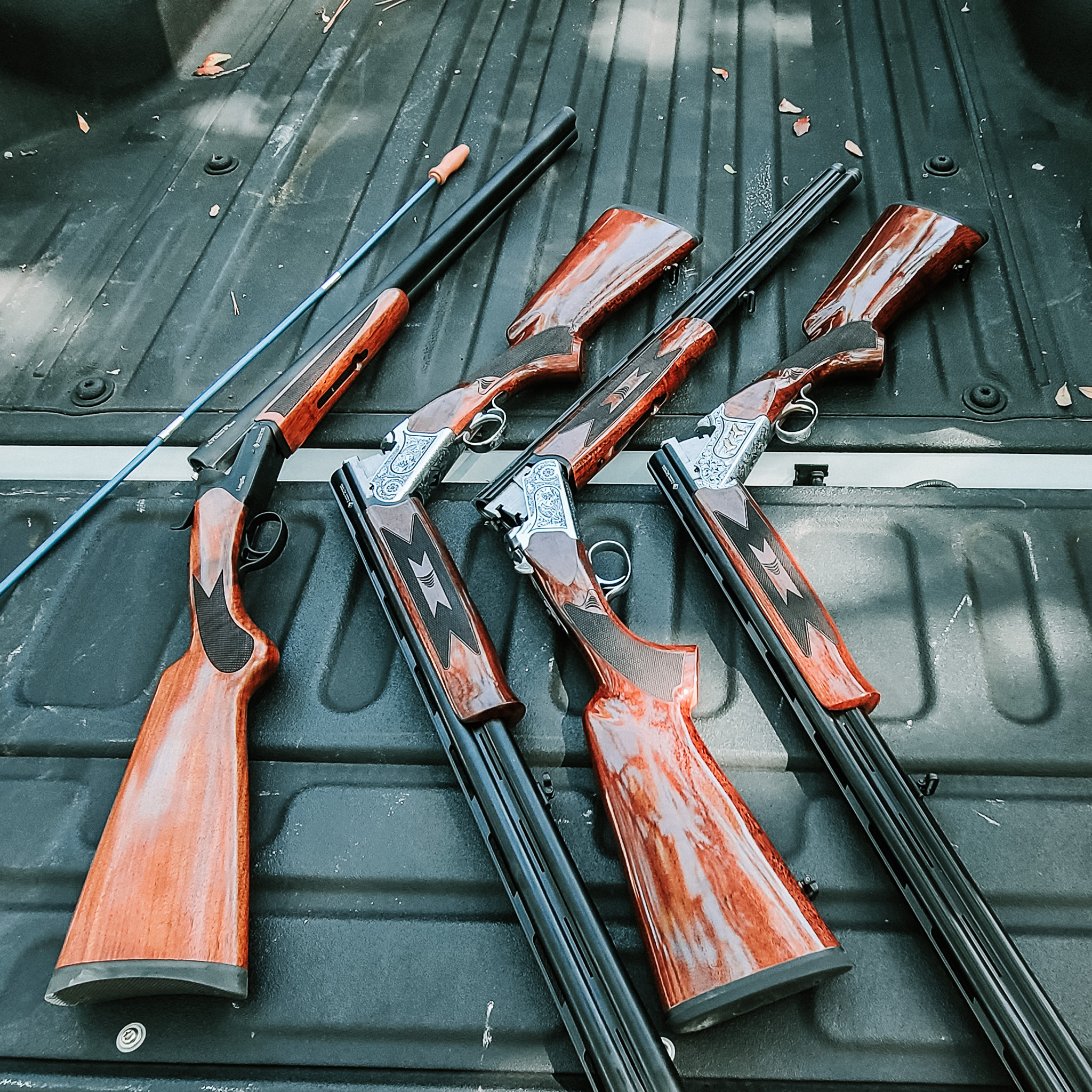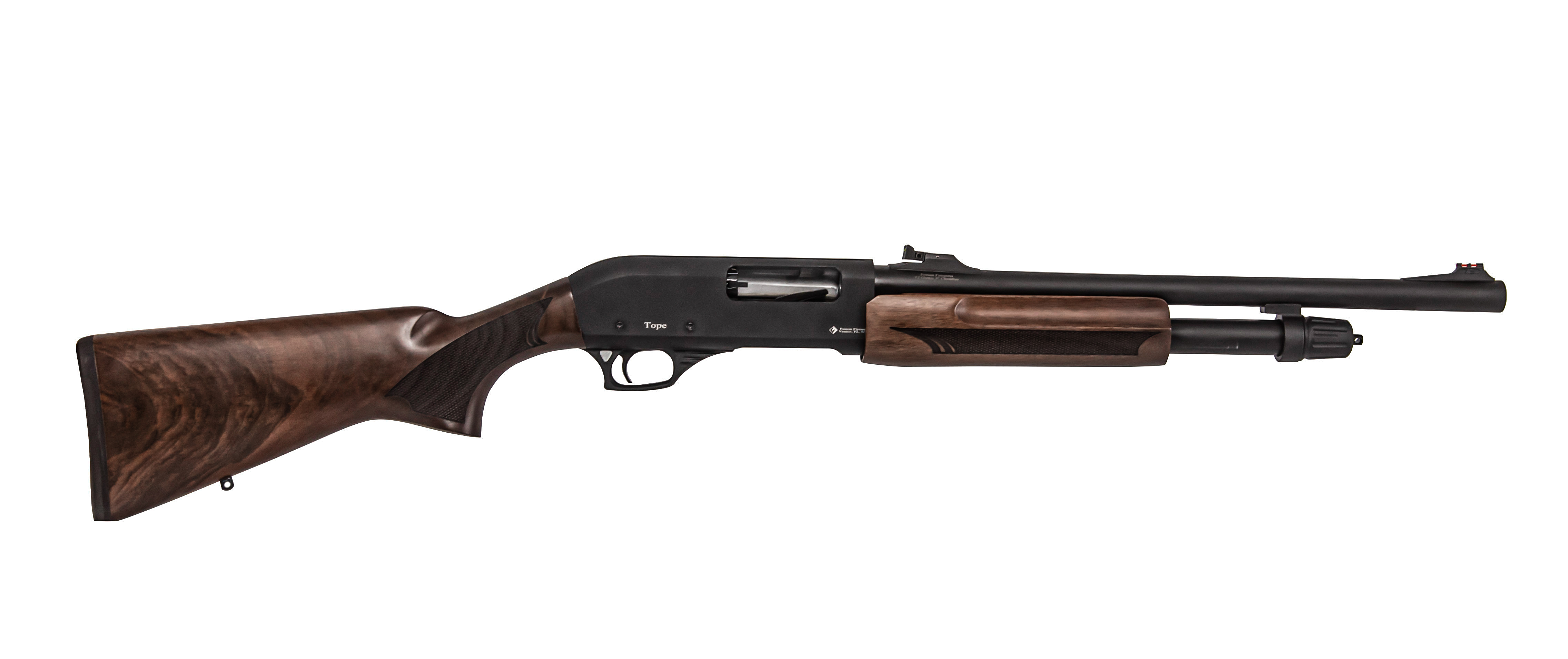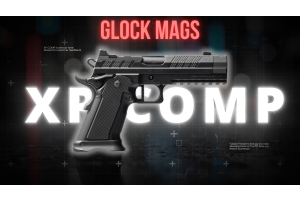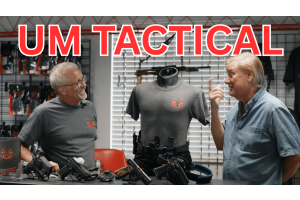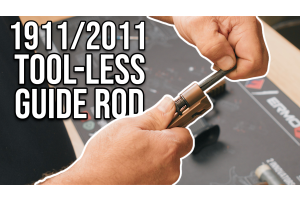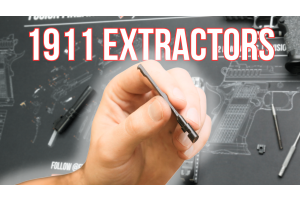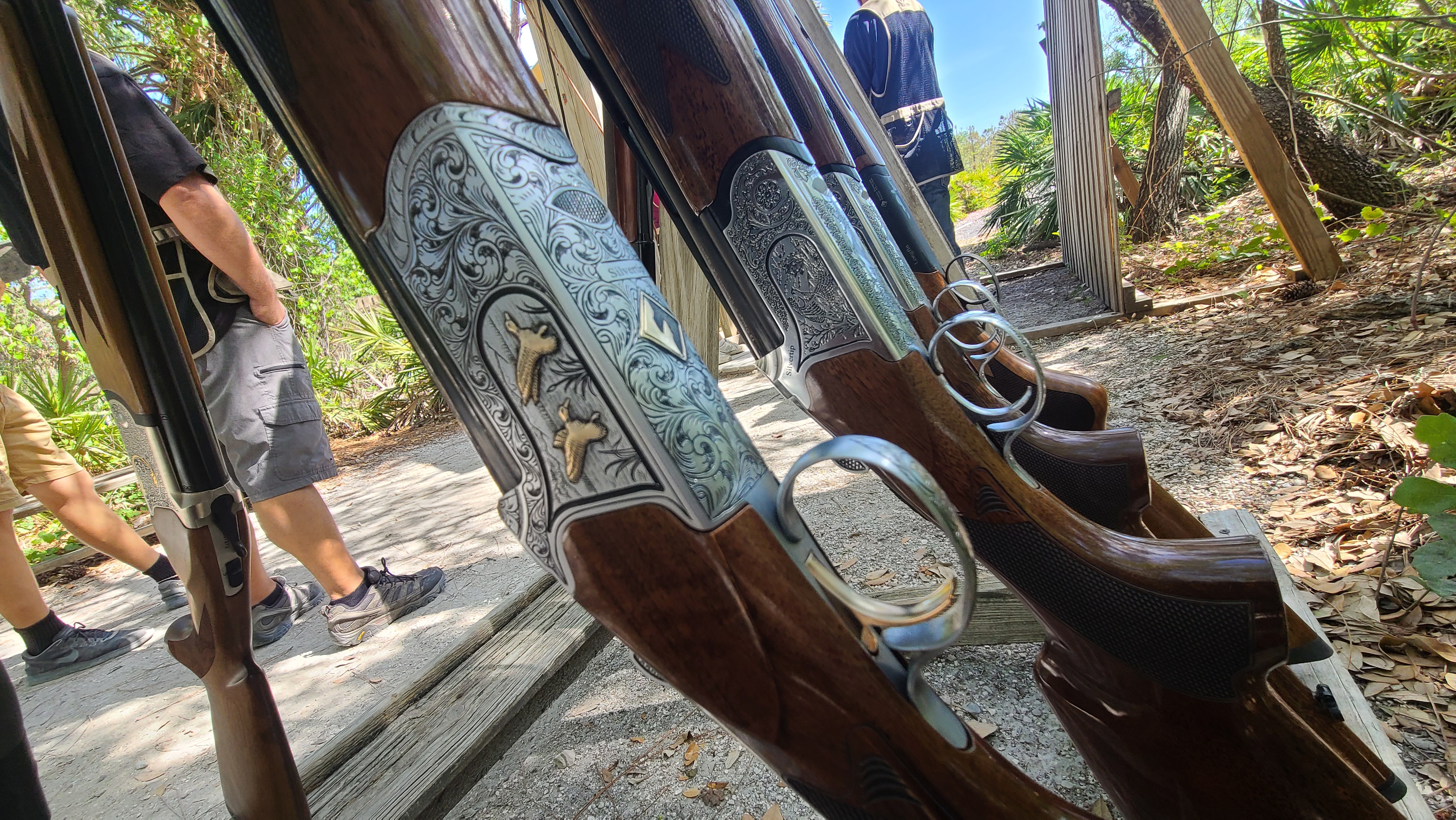
An Overview of Shotgun Types - All You Need to Know
0%
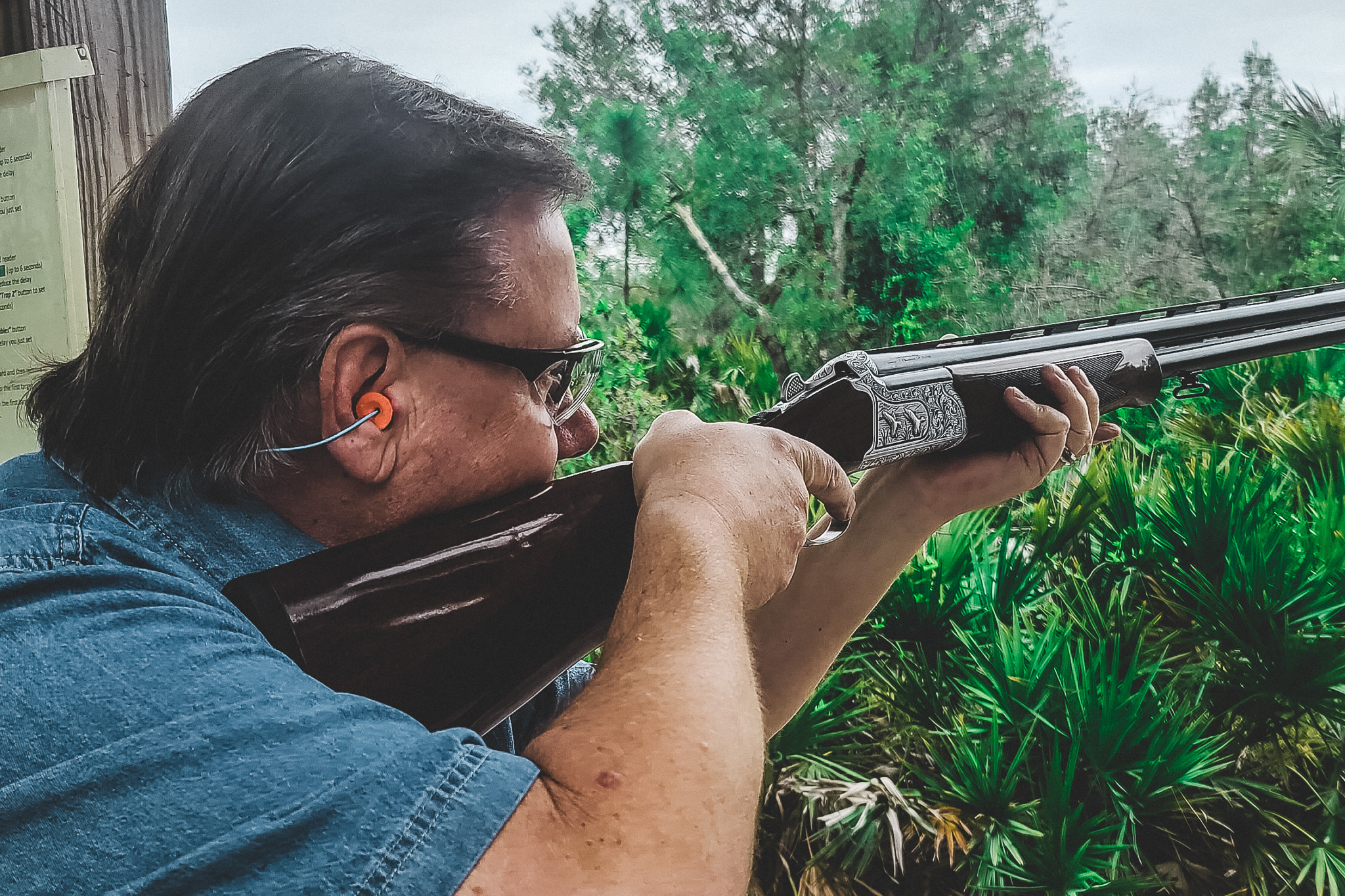
Imagine being in the market for a new shotgun for hunting, sport shooting, or home defense. With so many options available, it’s essential to understand the different shotgun types and their various uses. In this comprehensive guide, we’ll explore the world of shotguns - from actions and barrel configurations to gauges, ammunition, and specialty models. By the end of this journey, you’ll be well-equipped to make an informed decision when choosing the perfect shotgun for your needs.
Short Summary
-
Break-action, pump-action, semi-automatic and lever action shotguns offer a variety of features for different shooting scenarios.
-
Shotgun barrel configurations have an impact on the performance and use. Single or double barrels are available in side by side or over under configurations.
-
Gauges, ammunition types and shotgun accessories must be considered when selecting the right firearm for your needs. Regular cleaning & maintenance is essential to ensure reliability & accuracy.
Understanding Shotgun Actions
The action of a shotgun plays a crucial role in its performance and usage. The four main types of shotgun actions are:
Each type has unique features and advantages that cater to different shooting scenarios, preferences, and skill levels.
Understanding these actions will help you determine which shotgun is best suited for your intended purpose, whether it’s hunting, sport shooting, or self-defense.
Learn about shotgun action comparisons
Break-Action Shotguns
Break-action shotguns are a classic firearm design appreciated for their simplicity and dependability. One such example is the break action shotgun, which consists of single or double barrel configurations and utilizes a thumb-activated lever to open the breech for manual reloading. The ease of use and reliability of break-action shotguns make them a popular choice for hunting and target shooting, especially among beginners.
While break-action shotguns are often seen as an “old-fashioned” option, don’t let their traditional design fool you. Variations on the break-action design come in a variety of configurations. Examples include two-barreled guns with sliding actions and rotary designs, where the action must be rotated to open. This time-tested design has proven its worth in the field and at the range, making break-action shotguns a timeless classic.
Pump-Action Shotguns
Pump-action shotguns are versatile, reliable, and affordable firearms that have gained popularity in various shooting scenarios, including hunting and law enforcement. They feature a fore-end grip that the shooter pulls back and pushes forward to cycle rounds, making them easy to use and providing quick follow-up shots. Pump-action shotguns typically have a tubular magazine beneath the barrel, which can hold up to four shells, though some tactical models can accommodate up to 15 rounds.
The pump-action design is known for its distinct “chik-TCHACK” sound when loading a shell, which can serve as a deterrent in home defense situations. Pump-action shotguns are widely popular for a variety of reasons. Examples of these models include the Fusion FIrearms Tope, Winchester Model 1897, Remington 870, and Mossberg 500/590. While these shotguns may have a slower rate of follow-up shots compared to other types, their dependability and adaptability make them a popular choice for various applications.
The essential components of a pump-action shotgun are:
-
Stock: Provides three points of contact between the weapon and shooter
-
Comb: The raised portion of the stock that aligns the shooter’s eye with the sights.
-
Trigger guard: Encircles the trigger to avoid unintended contact
-
Safety switch: Often integrated into the rear of the trigger guard, providing an additional level of security while handling the firearm
These components work together to ensure safe and effective use of the shotgun.
Semi-Automatic Shotguns
Semi-automatic shotguns, also known as semi-auto shotguns, have gained popularity among hunters and tactical users due to their reduced recoil and fast shooting speed. These semi automatic shotgun models use the energy from the last shot fired to quickly load the next round, making them ideal for fast-moving targets and rapid follow-up shots.
Semi-automatic shotguns are widely used with some of the most popular models being the Remington 1100, Benelli M1 and Saiga-12. These shotguns offer a great combination of firepower and accuracy. While these shotguns may have a more complex design and be more prone to jamming than other types, their performance benefits often outweigh the drawbacks for many hunters and tactical users.
Lever-Action Shotguns
Lever-action shotguns offer a unique and efficient design among shotgun types. These shotguns feature an integral magazine and allow for rapid fire by cycling the action with a lever. The Winchester Model 1887, designed by John Browning, was a popular lever-action shotgun that enabled rapid fire more effectively than traditional break-action designs.
Though the military did not adopt lever-action shotguns due to the difficulty of manipulating the lever while in a prone position, these shotguns remain an interesting and uncommon choice for various shooting scenarios.
Shotgun Barrel Configurations
Shotgun barrel configurations play a significant role in the performance and use of the firearm. Different configurations, such as:
-
Single-barrel
-
Double-barrel
-
Side-by-side
-
Over-under
Offer unique advantages and disadvantages. Understanding these configurations will help you choose the most suitable shotgun for your needs, whether you’re a hunter, sport shooter, or in need of a home defense weapon.
Barrel length and choke tubes also impact the performance of a shotgun. Comparing shotguns with the same barrel length can help you understand how longer barrels provide increased accuracy, while choke tubes control the spread of the shot pattern. Exploring these factors can help you fine-tune your shotgun’s performance for your specific shooting scenario.
Single-Barrel Shotguns
Single barrel shotguns are a straightforward and lightweight option for shooters. With only one barrel for firing, these shotguns are suitable for beginners and budget-conscious shooters. Available in break-open, pump-action, and lever-action styles, single barrel shotguns offer a variety of options for different shooting purposes.
While single barrel shotguns have limited capacity and may not be as accurate as those with a rifled barrel, their simplicity and ease of use make them an appealing choice for many shooters.
Double-Barrel Shotguns
Double-barrel shotguns are designed with two barrels, allowing for two shots before reloading. These double barrel shotgun models are available in side-by-side and over-under configurations, each with their own distinct advantages and disadvantages.
Side-by-side shotguns offer a classic design and quick follow-up shots, making them ideal for hunting scenarios. However, they may have more felt recoil compared to other configurations.
Over-under shotguns, on the other hand, provide better balance and accuracy, making them a popular choice for target shooting. Despite their performance benefits, over-under shotguns are often more expensive than other configurations.
Side-by-Side Shotguns
Side-by-side shotguns feature.
-
Two barrels placed horizontally next to each other
-
Classic design
-
Quick follow-up shots
-
Favored by hunters for their rapid successive shots and ease of use
However, side-by-side shotguns may experience increased felt recoil when compared to other types of shotguns, and they tend to be more costly than other configurations. Proper consideration of weight, barrel length, and ammunition type is necessary when utilizing side-by-side shotguns for optimal performance.
Over-Under Shotguns
Over-under shotguns have the following features:
-
Two barrels stacked vertically
-
Better balance and accuracy compared to other configurations
-
Often used for target shooting
-
Well-regarded for their performance benefits
However, over-under shotguns are often more expensive than other configurations, which may be a deterrent for some shooters. Despite the higher cost, the improved balance and accuracy of over-under shotguns make them a popular choice for those seeking a high-performance firearm.
Gauges and Ammunition
Shotgun gauges and ammunition types play a crucial role in the performance and use of the firearm. Understanding the various shotgun gauges and their specific uses will help you choose the right shotgun and ammunition for your needs. Shotguns can fire various types of shells, including birdshot for small game, buckshot for larger game and self-defense, and slugs for big game and long-range shooting. Each type of ammunition has its own unique advantages and applications in hunting, sport shooting, and self-defense.
By familiarizing yourself with the different shotgun gauges and the types of ammunition available, you can ensure that you are using the most effective and appropriate tools for your shooting scenario. Whether you’re a bird hunter, a target shooter, or in need of a self-defense weapon, understanding shotgun gauges and ammunition is essential for maximizing your firearm’s potential.
Shotgun Gauges Explained
Shotgun gauges determine the size of the bore and the amount of powder and shot it can hold. Common gauges range from 10 to.410, each with specific uses and recoil levels. Choosing the right gauge for your shotgun will depend on factors such as the type of shooting you plan to do, your skill level, and your personal preferences.
For example, a larger gauge like the 10-gauge is suitable for hunting large game, while a smaller gauge like the.410 is ideal for small game and target shooting. Understanding the uses and recoil levels of each type of shotgun gauge will help you make an informed decision when selecting the best shotgun for your needs.
Types of Shotgun Shells
Shotguns can fire various types of shells, each designed for specific shooting scenarios. Here are some examples:
-
Birdshot shells: filled with small pellets and are ideal for hunting small game, such as birds and rabbits.
-
Buckshot shells: contain larger pellets and are suitable for hunting larger game and self-defense situations.
-
Slugs: single projectiles designed for hunting big game and long-range shooting.
By understanding the different types of shotgun shells and their uses, you can ensure that you have the right ammunition for your intended purpose. Whether you’re hunting small game, protecting your home, or participating in target shooting, choosing the appropriate shotgun shell is essential for optimal performance and safety.
Specialty and Uncommon Shotguns
In addition to the more common types of shotguns, there are also specialty and uncommon shotguns that offer unique features and uses. Bolt-action, revolver, and slamfire shotguns are examples of these less frequently encountered varieties. While these shotguns may not be as popular or widely used, they offer interesting design elements and capabilities that may appeal to certain shooters.
It’s important to remember that these specialty and uncommon shotguns may have additional safety risks or limitations compared to more mainstream options. As such, it’s crucial to carefully consider your needs and preferences when selecting a shotgun, and to thoroughly research and understand the unique features and risks associated with these less common options.
Bolt-Action Shotguns
Bolt-action shotguns are:
-
accurate but uncommon firearms
-
primarily used by deer and turkey hunters
-
operate similarly to bolt-action rifles
-
provide a high level of accuracy and precision for shooting game at longer distances.
Despite their accuracy, bolt-action shotguns are not suitable for tactical scenarios, as they lack the rapid-fire capabilities of other types of shotguns. While they may be a niche choice for certain hunters, it’s important to consider the specific features and limitations of bolt-action shotguns when determining if they’re the right fit for your shooting needs.
Revolver Shotguns
Revolver shotguns function much like handgun revolvers, featuring a rotating cylinder that houses multiple rounds of ammunition. The unique design and operation of these shotguns make them an interesting choice for those seeking a less common firearm option.
However, revolver shotguns are rare and often limited in capacity compared to other types of shotguns. As such, they may not be the most practical choice for all shooting scenarios. Understanding the design and limitations of revolver shotguns will help you determine if they’re the right choice for your needs.
Slamfire Shotguns
Slamfire shotguns are homemade firearms made from pipes and a firing pin. These unconventional shotguns offer a unique design and operation, but are not recommended for use due to safety risks and potential for malicious purposes.
The construction and use of slamfire shotguns can be dangerous, and their potential for misuse makes them a controversial choice. For those seeking a reliable and safe shotgun, it’s best to stick with more mainstream options and avoid the risks associated with slamfire shotguns.
Shotgun Accessories and Maintenance
Proper shotgun cleaning and maintenance are crucial for ensuring the reliability, accuracy, and longevity of your firearm. Regular cleaning and maintenance can help prevent malfunctions and ensure that your shotgun is always ready when you need it. In addition to routine care, there are a variety of popular shotgun accessories available to help enhance the performance and convenience of your shotgun, making it more versatile and user-friendly. Some popular shotgun accessories include:
-
Extended magazine tubes
-
Choke tubes
-
Recoil pads
-
Sling attachments
-
Picatinny rails
-
Shell carriers
By investing in these accessories and regularly cleaning and maintaining your shotgun, you can optimize its performance and enjoy a more enjoyable shooting experience.
From choke tubes and shell carriers to slings and other add-ons, shotgun accessories can help you customize your firearm to better suit your needs and preferences. By investing in proper maintenance and the right accessories, you can ensure that your shotgun performs at its best and provides you with years of reliable service.
Cleaning and Maintenance
Regular cleaning and maintenance of your shotgun are essential for its continued reliability, accuracy, and longevity. By keeping your shotgun clean and well-maintained, you can help prevent malfunctions and ensure that it remains in optimal working condition.
Specific tools and techniques are required for cleaning and maintaining each type of shotgun, including:
-
Cleaning rods
-
Jags
-
Cleaning patches
-
Cleaning brushes
-
Cleaning agents
-
Lubricants
-
Protectants
Familiarizing yourself with these tools and methods will help you keep your shotgun in top condition, ensuring that it performs at its best and lasts for years to come.
Popular Shotgun Accessories
Shotgun accessories can play a significant role in enhancing the performance and convenience of your firearm. Popular accessories include:
-
Choke tubes, which regulate the spread of the shot pattern for increased accuracy
-
Shell carriers for storing additional shells for quick reloading
-
Slings for easy transportation
By selecting the appropriate accessories for your shotgun, you can customize its functionality and performance to better suit your needs and preferences. Whether you’re a hunter, sport shooter, or using your shotgun for home defense, the right accessories can help you make the most of your firearm and improve your overall shooting experience.
Summary
In conclusion, understanding the various types of shotguns, their actions, barrel configurations, gauges, ammunition, and accessories is crucial for making an informed decision when choosing the perfect shotgun for your needs. By exploring the unique features and benefits of each type of shotgun, as well as the importance of proper cleaning and maintenance, you can ensure that you’re selecting a firearm that is both reliable and well-suited to your shooting needs.
Whether you’re a seasoned hunter, a competitive sport shooter, or simply looking for a reliable home defense weapon, the world of shotguns offers a wide range of options to fit your needs and preferences. Armed with the knowledge from this comprehensive guide, you’ll be well-equipped to find the ideal shotgun for your shooting adventures.
Frequently Asked Questions
What are the 4 types of shotguns?
Four types of shotguns are commonly available: break-action, pump-action, lever-action, bolt-action, revolver, semi-automatic and automatic.
What are the 5 types of shotguns?
Common types of shotguns include semi-automatics, pumps, double barrels, bolts, levers, and single shots. All of these can be used for various hunting, sporting, or defensive purposes.
What is the main difference between break-action and pump-action shotguns?
Break-action shotguns require manual reloading, while pump-action shotguns use a fore-end grip to cycle rounds.
This means that break-action shotguns require more effort to reload, while pump-action shotguns can be reloaded quickly and easily.
What are the advantages of using a semi-automatic shotgun?
Semi-automatic shotguns provide users with advantages such as reduced recoil and fast shooting speed, making them an ideal choice for hunters and tactical shooters.
These advantages make semi-automatic shotguns a great choice for those who need a reliable and powerful firearm. They are easy to use and can be used in a variety of situations, from hunting to tactical shooting.
The reduced.
What are the main types of shotgun gauges, and what are their uses?
Common shotgun gauges include 10-gauge, 12-gauge, 16-gauge, 20-gauge, 28-gauge, and.410/36-gauge, each having its own unique use and recoil level.


